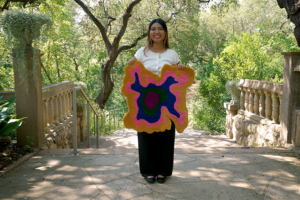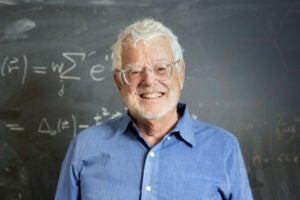We hear a lot of doom-and-gloom about the future.
The world will be too hot, too crowded. There will be too few resources and more competition for them.
We asked University of Texas at Austin researchers for the opposite — the ideas, technologies, policies or combinations that will make it possible for the world to be a better place in the future.
In this third installment of “The Big Question” series, Josh Busby, assistant professor in the Lyndon B. Johnson School of Public Affairs, responds to the question “What in your field could make the world a better place?”
____________________________

What kinds of ideas might lead to transformational change that would make people’s lives better? Scientific and technological breakthroughs such as a vaccine for AIDS or a microbe that takes carbon dioxide out of the air could help us resolve some of the most pressing problems. At present, these dramatic discoveries seem a ways off. Within our grasp already are some tools that could help us prepare for challenges likely to test us in years to come. Here, the Robert S. Strauss Center’s work on Africa’s vulnerability to a changing climate, promises to provide affected countries and the international community with the information necessary to enhance their preparedness, perhaps helping to protect millions of lives.

vulnerability coalesce. View a larger version of this graphic.
Our research is designed to identify trouble spots where extreme weather events and changing patterns in rainfall and temperature are likely to put large numbers of people in Africa at risk of death. Using Geographic Information Systems, we have mapped [PDF] where vulnerable populations are likely to be located at the subnational level. Here, vulnerability is a complex of (1) physical exposure to historic hazards, (2) where people live, (3) what resilience communities have to protect themselves from harm, and (4) whether or not their governments are willing and able to protect them if need be. These snapshots of vulnerability provide a window into how countries and donors can prioritize resources to adapt to changes that are likely and minimize their negative consequences. Such preparedness can reduce the deadliness and suffering associated with extreme weather events and prevent such climate shocks from becoming disasters.

Our vulnerability work largely relies on data on past exposure to extreme weather events. We are taking our research a step further, working with Kerry Cook and Ned Vizy, scientists from the Jackson School of Geosciences, to develop a regional climate model for Africa. These mid 21st century projections are more fine-grained than global climate models and focus on indicators of interest to decision-makers like changes in the number of heat wave days, streaks of extremely dry days and days with very heavy rainfall. These models are “validated” by comparing projected data to actual rainfall data and compared to other models. To the extent that our projections and areas of historic vulnerability overlap, we believe our research gives policymakers ample information to plan and adapt.
We are taking our analytical work further by identifying where existing donor-funded adaptation efforts are occurring, research led by my colleague Kate Weaver. By classifying which donor projects are adaptation-related and identifying their geo-coordinates, we can see if the places that are currently receiving adaptation assistance are the same ones that appear in our trouble spots of historic vulnerability and our projections of future vulnerability.

Finally, our aim is ultimately to provide this information in user-friendly formats on the web. Already, our research partners have produced the Social Conflict in Africa Database (SCAD), the Armed Conflict Location and Events Dataset (ACLED) and AidData. Transparency in information is increasingly important in enhancing the effectiveness of international organizations. The World Bank is making much of its data available to other users, recognizing it does not have a monopoly on good answers. The long-term goal is a website where people can select what data they would like to display, enabling them to conduct analysis of their own, selecting indicators based on their own experience and intuitions, and generating maps, tables and graphs to advance their own research and planning agendas. While that may be a small first step, we hope that, as The University of Texas at Austin motto states, what starts here changes the world.
Josh Busby is assistant professor of public affairs in the Lyndon B. Johnson School of Public Affairs and a fellow in the RGK Center for Philanthropy and Community Service as well as a Crook Distinguished Scholar at the Robert S. Strauss Center for International Security and Law.



